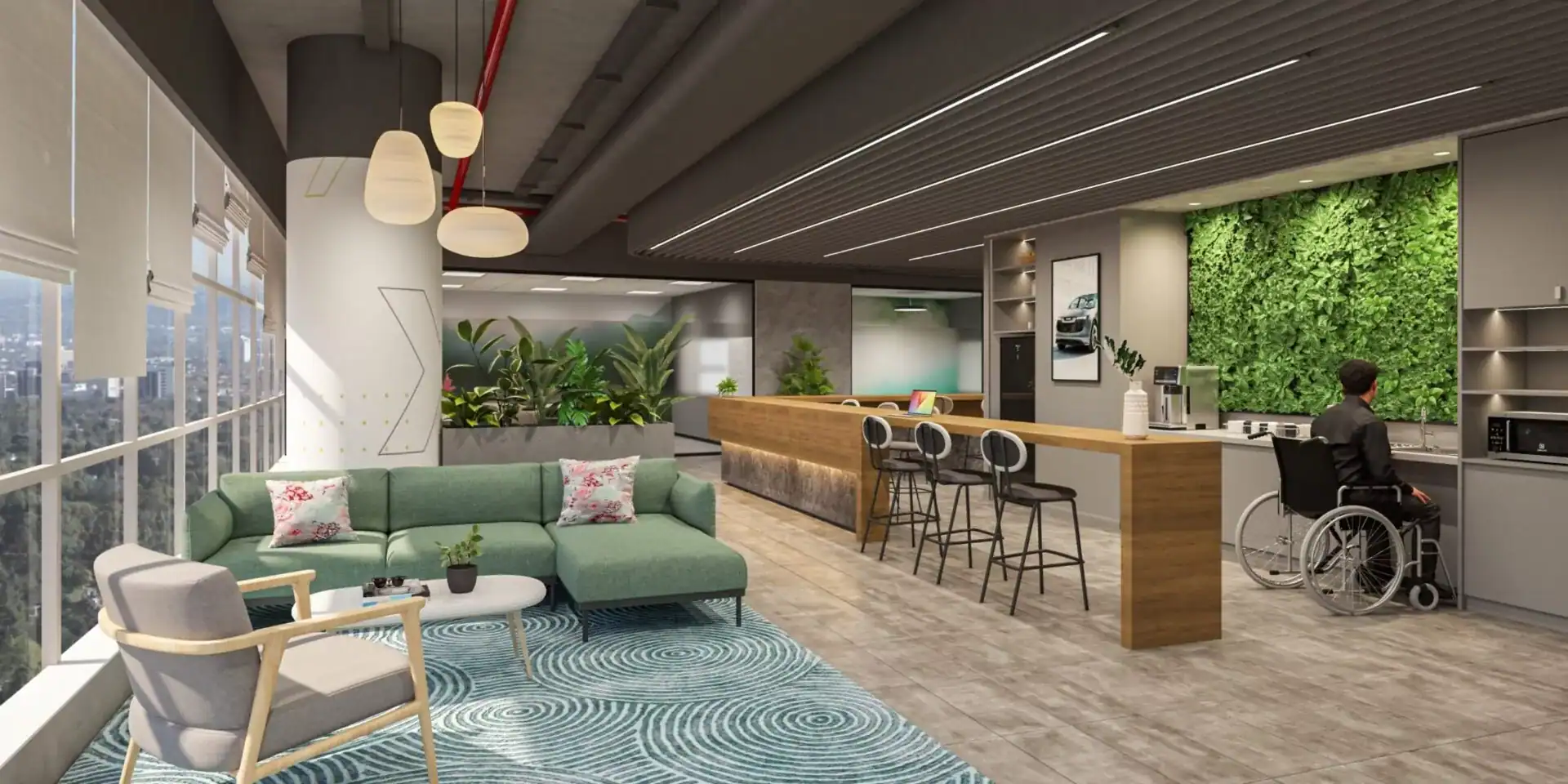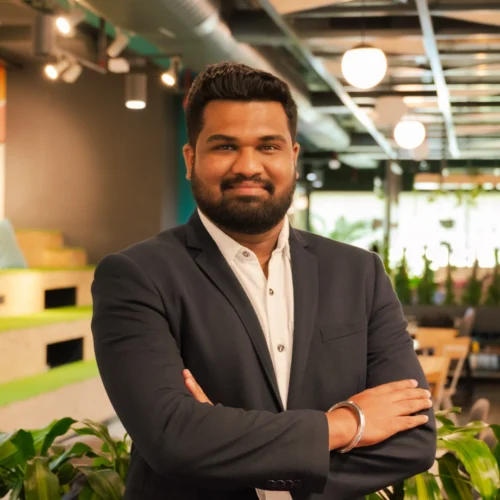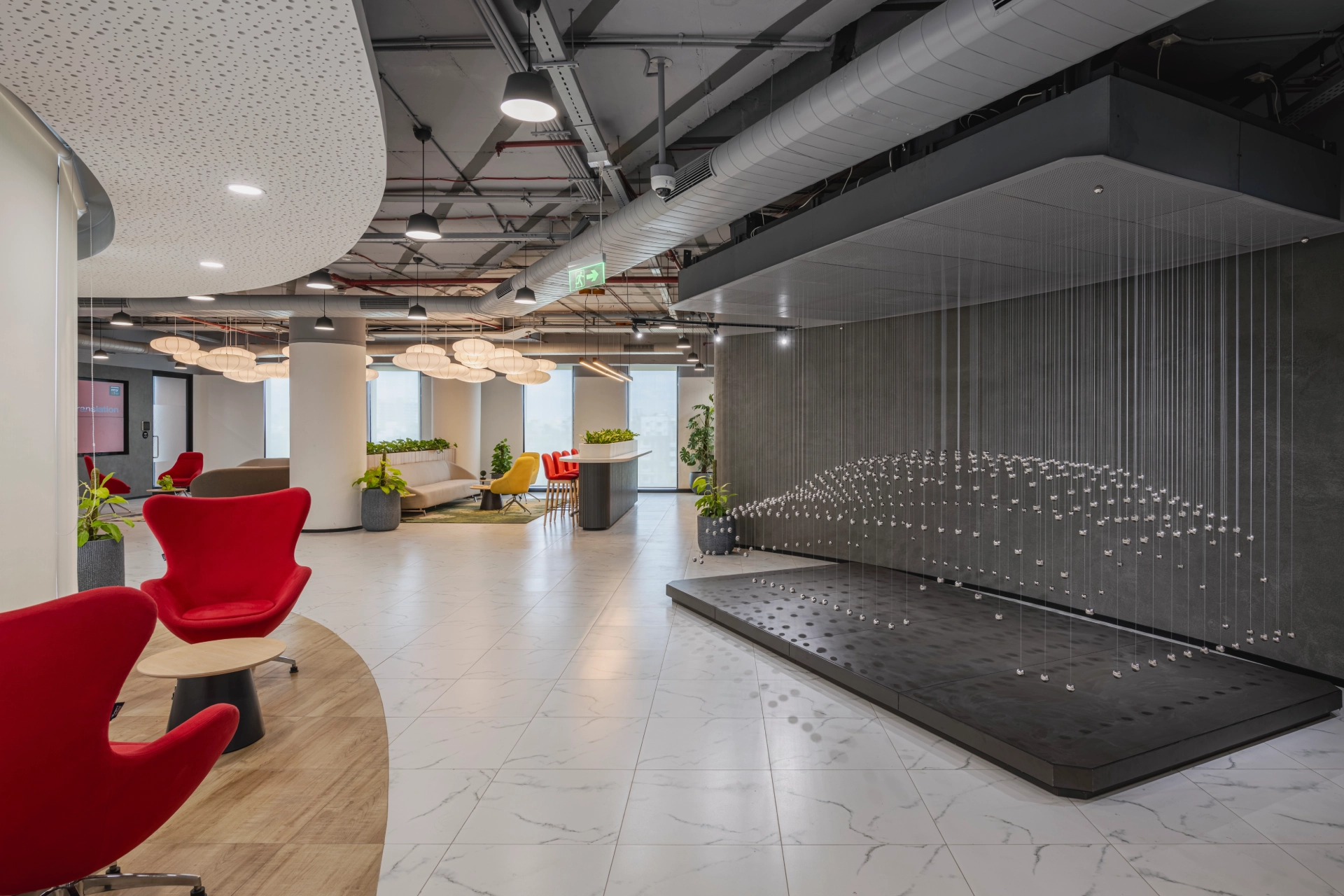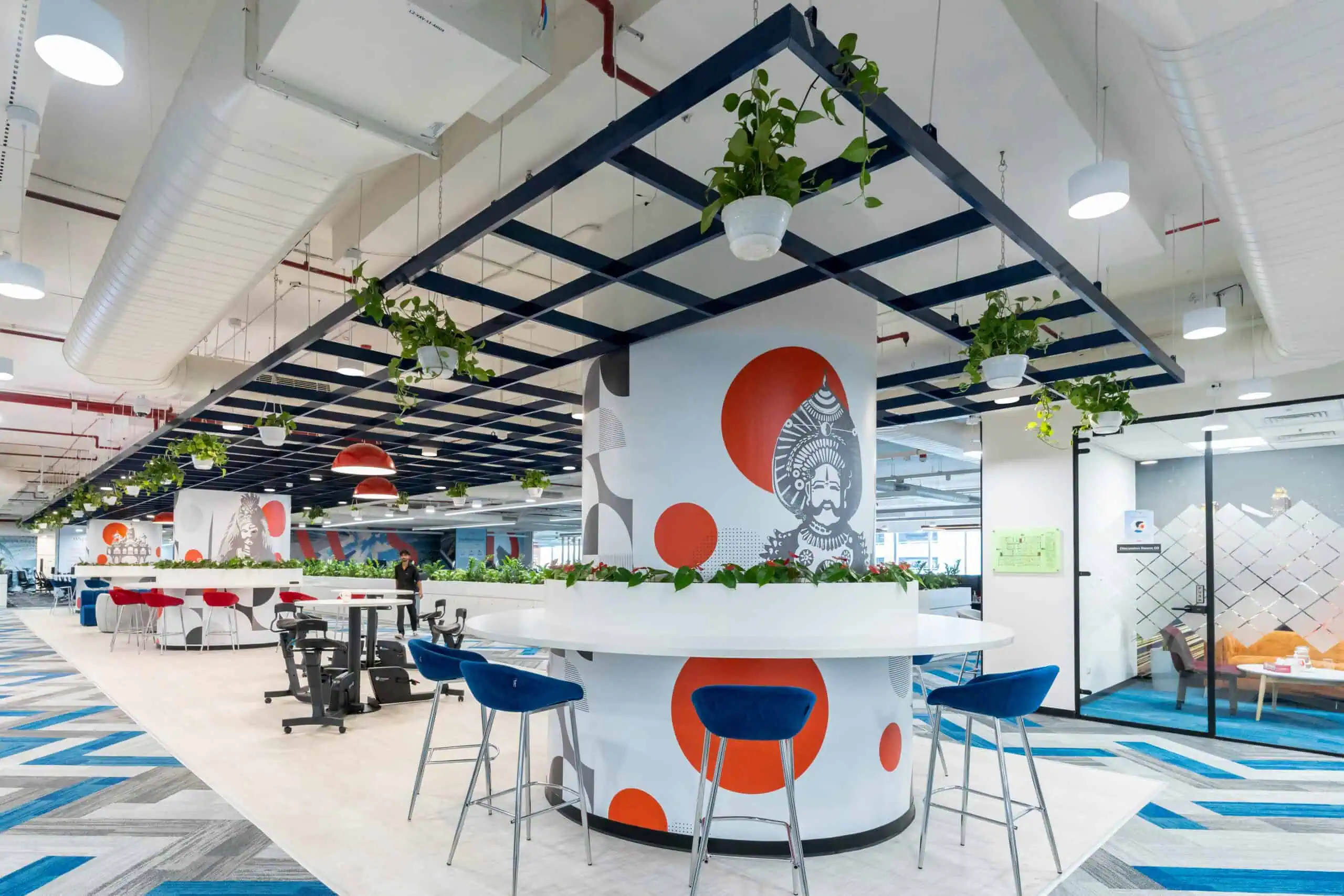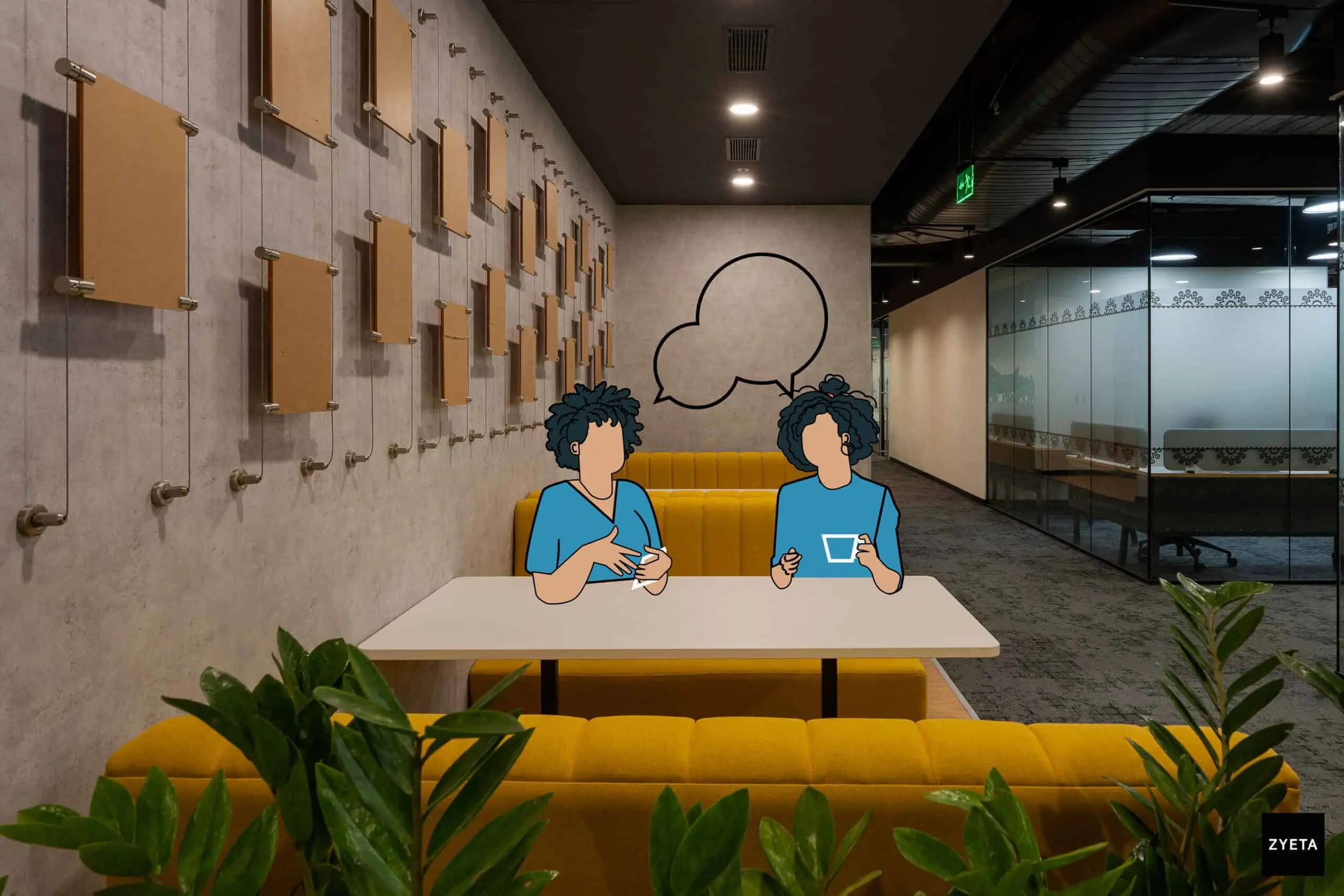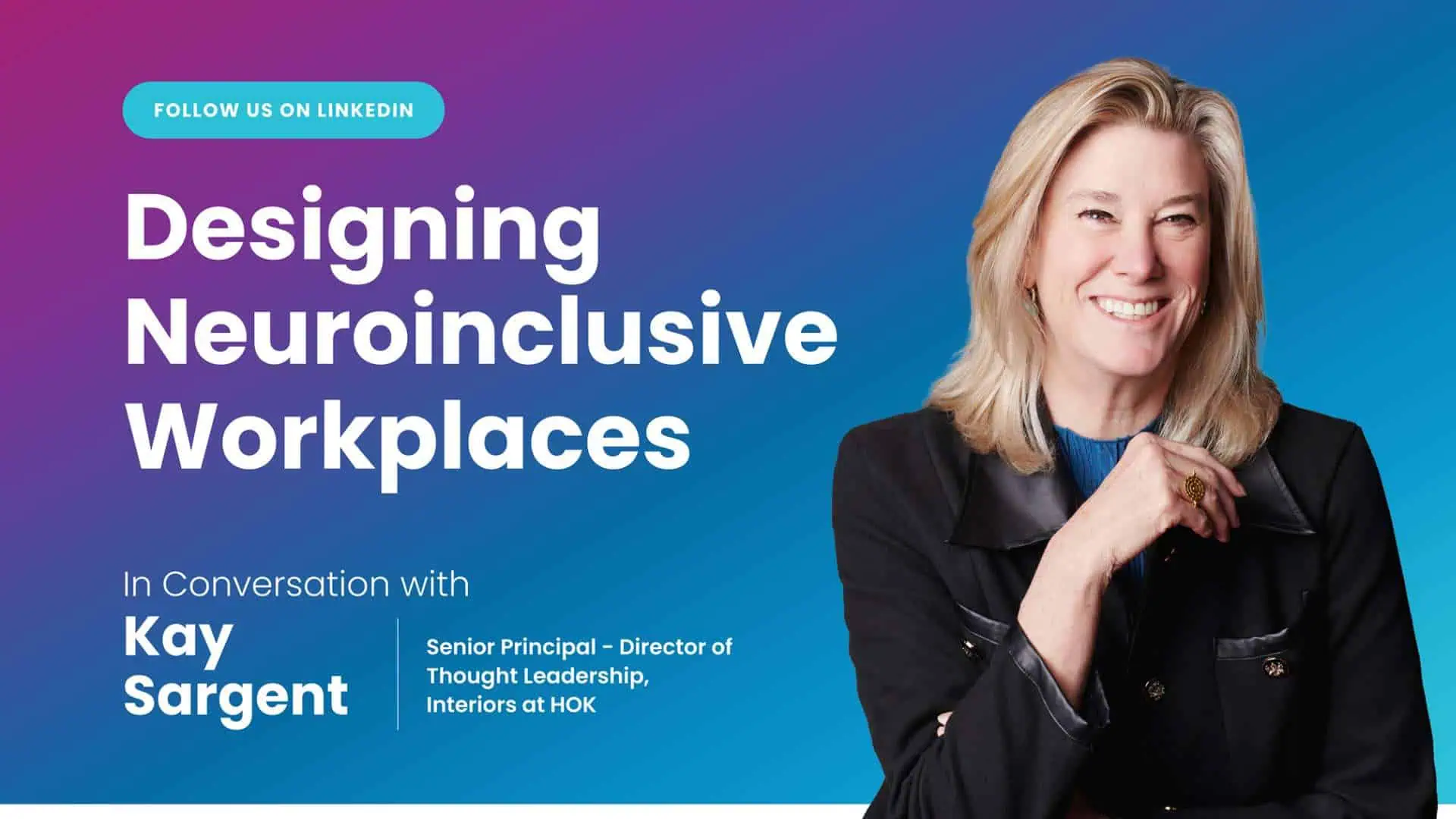Accessible workplace design is a cornerstone of fostering inclusivity and promoting equal opportunities for individuals of all abilities. It focuses on using human-centered design, technology, and ergonomics to create spaces that are functional and supportive for all users. Accessible workplaces not only meet the needs of individuals with disabilities but also create a seamless experience for all employees, fostering innovation, collaboration, and business success. By embracing accessibility as a strategic priority, organizations can build workplaces that are future-ready, equitable, and truly inclusive.
The Business Case for Accessibility
The benefits of accessible design extend beyond legal compliance.By creating inclusive workplaces, organizations can:
- Enhance Employee Experience: Boost employee morale, satisfaction, and loyalty.
- Improve Productivity: Reduce absenteeism, improve focus, and enhance overall performance.
- Expand Market Reach: Attract and retain a diverse workforce and customer base.
- Strengthen Brand Reputation: Demonstrate a commitment to social responsibility and inclusivity.
Asia’s Growing Focus on Accessible Workplace Design
Asian nations including India, Hong Kong and particularly Southeast Asian nations, such as Singapore, and Malaysia, are increasingly recognizing the importance of accessible workplaces. Governments and organizations are implementing regulations and guidelines to promote inclusivity. This shift toward accessibility is not just a moral imperative but also a strategic business decision that can lead to increased employee satisfaction, improved productivity, and enhanced brand reputation.
The principles of universal design, coupled with region-specific guidelines such as Singapore’s Code on Accessibility in the Built Environment, Malaysia’s Code of Practice on Access for Disabled Persons, and Hong Kong’s Design Manual – Barrier-Free Access, provide comprehensive frameworks to achieve inclusivity.
Let’s understand these region specific accessible design parameters in detail:
India
Harmonised Guidelines and Standards for Universal Accessibility in India emphasize creating accessible environments for people with disabilities.
Some key parameters include:
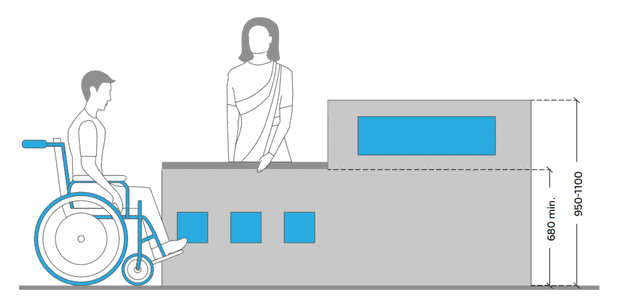
- Reception counters should have dual heights (750-800 mm and 950-1100 mm) to accommodate users of varying heights, including wheelchair users. Additionally, counters should provide a 680 mm knee clearance space on both sides for wheelchair accessibility
- All ramps should have a gentle slope of 1:12 to ensure easy accessibility for wheelchair users.
- Clear spaces of at least 1500mm x 1500mm should be provided for wheelchair users to maneuver comfortably.
- Service counters, such as those in pantries and reception areas, should be at a height of 800-1000mm to accommodate people of different heights, including wheelchair users.
These standards align India’s workplaces with global accessibility benchmarks, especially as the country sees rapid growth in IT and corporate hubs.
Singapore
Singapore’s Code on Accessibility in the Built Environment provides comprehensive guidelines to ensure inclusivity in workplaces.
Certain highlights include:
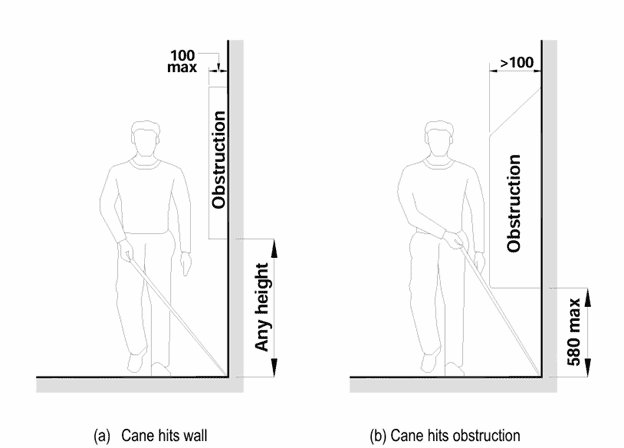
- Seating spaces at counters, tables, or work surfaces must have a clear floor space of at least 900mm x 1200mm for wheelchair users.
- Undetectable wall-mounted objects should not protrude more than 100mm above 580mm from the floor into pedestrian areas such as walkways, passages, etc.
- Tactile ground surface indicators (TGSIs) must be installed along pathways to guide individuals with visual impairments.
- Two-way swing doors or doors across circulation routes must have vision panels from 900mm to 1500mm to prevent accidental collisions.
Singapore’s proactive approach ensures that workplaces are not only functional but also aligned with its vision of inclusivity.
Malaysia
Malaysia has made significant strides in promoting accessibility, especially in public spaces and commercial buildings. Universal Design and Accessibility in the Built Environment – Code of Practice prescribes parameters to emphasize the right of persons with disabilities to access employment on an equal basis with others, mandating employers to provide just and favorable conditions of work.
Some key accessibility parameters include:
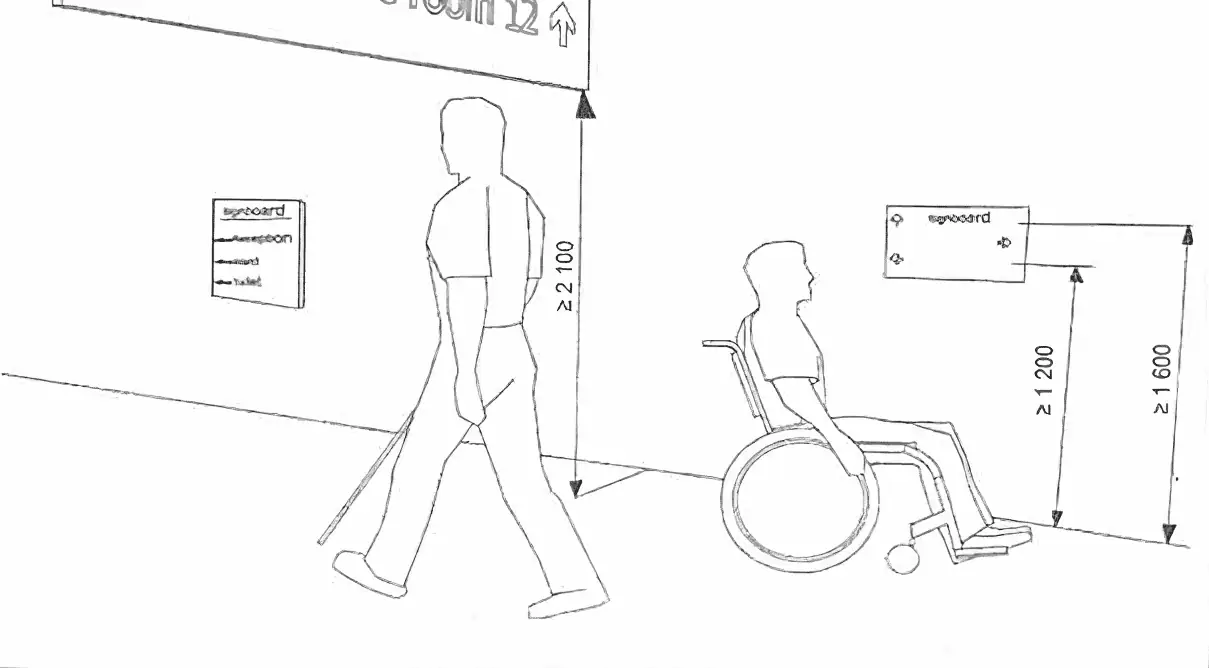
- For glazed doors, uninterrupted visual indicators of at least 75 mm in height, clearly contrasting with the background, should be placed at 900-1000mm and 1300-1400mm above the floor level. An additional indicator at 100-300mm is recommended, using two contrasting colors for better visibility.
- Reception desks where writing is done by the visitor, the counter should allow frontal wheelchair access with clearance for knees. The counter should be 740-800mm high with 700mm of knee space. Additionally, part of the desk should be 950-1100mm high for standing users.
- Directional and functional signs should be placed below 1600mm for easy fingertip reading and must be visible to seated, standing, and walking people. In crowded areas, signs must be placed at least 2100mm high.
- Artificial lighting should be used to illuminate ramps, entrances, steps, and signage to a minimum of 100 lux to avoid glare, reflection, or shadows.
Hong Kong
Hong Kong’s Design Manual: Barrier-Free Access addresses the challenges posed by its dense urban environments while maintaining a strong focus on accessibility.
Some key standards include:
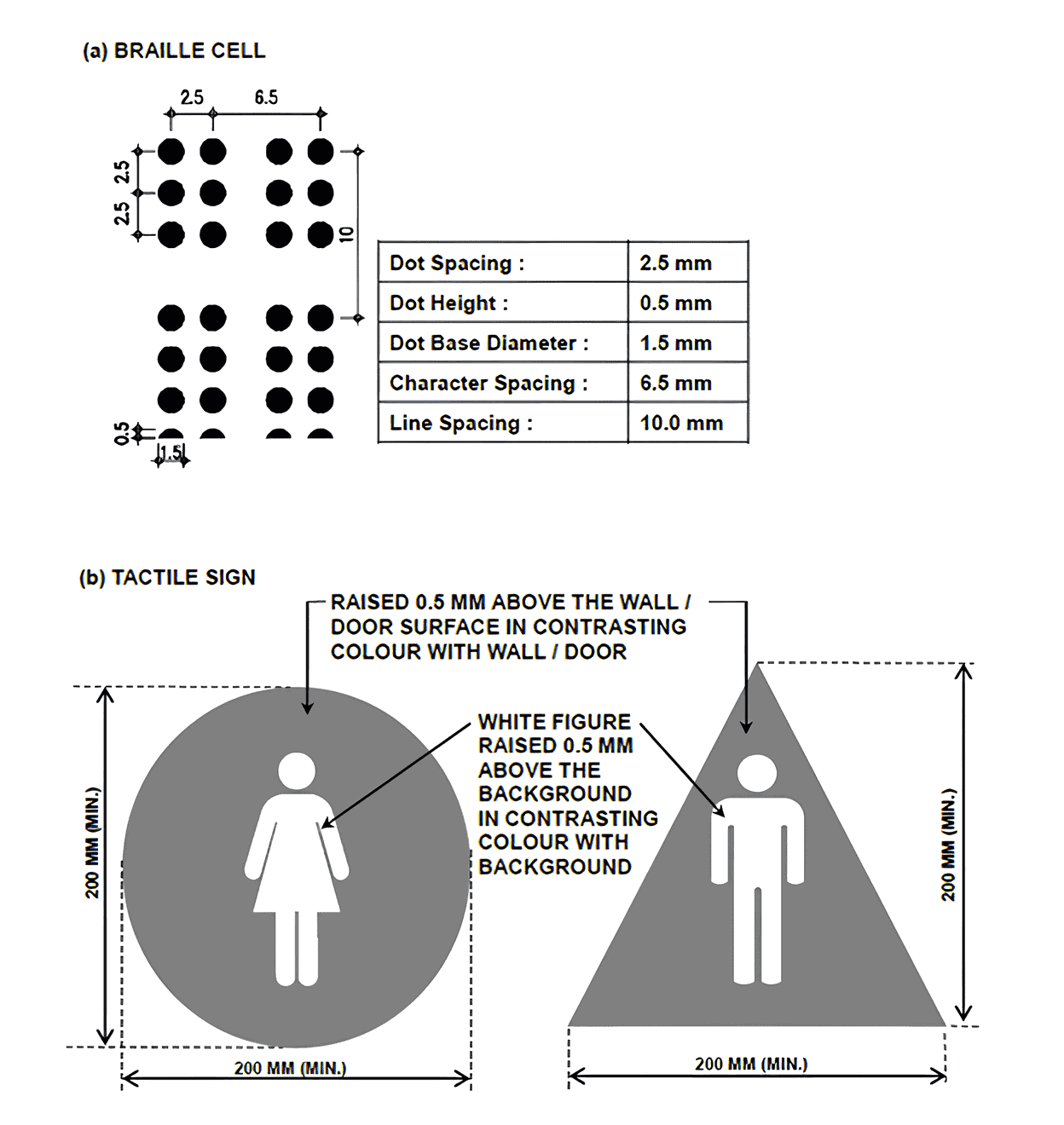
- Ramps must be at least 1050mm wide with 1500mm x 1500mm landings. The maximum slope is 1:12, with exceptions of 1:10 for 1500mm and 1:8 for 600mm.
- Doors allowing wheelchair passage should have 200mm high kickplates on the swinging face.
- Lighting should be relatively uniform and 25% higher for people with low vision. Strong directional lighting should be avoided, as it can create shadows that obscure contrasting surfaces.
- Braille and tactile signs indicating male, female, or unisex should be placed on the adjacent wall or door at 900-1500mm above the floor.
In Conclusion
These guidelines and standards align with global accessibility principles, ensuring that workplaces are designed with inclusivity in mind. These standards address critical aspects of workplace design and support the notion that good design can lead to better accessibility, higher employee well-being, and improved overall business performance.
Furthermore, accessibility is a vital part of creating workplaces that are inclusive, innovative, and future-ready. Countries like India, Singapore, Malaysia, and Hong Kong are leading the charge with comprehensive design standards that prioritize equity and usability. With the right focus on accessibility, Southeast Asia is poised to set new benchmarks in workplace inclusivity and design excellence.
Discover more about human-centric, sustainable, and accessible workspaces that empower businesses and individuals alike. Find out how accessible design can transform your workplace today by connecting with our experts in India and across southeast Asia!
Government of India. (2021). Harmonised Guidelines and Standards for Universal Accessibility in India. Ministry of Housing and Urban Affairs.
Building and Construction Authority (BCA). (2019). Code on Accessibility in the Built Environment. Singapore.
Government of Hong Kong. (2008, 2024 Edition). Design Manual: Barrier-Free Access.
Department of Standards Malaysia. Universal Design and Accessibility in the Built Environment – Code of Practice. Malaysian Standard.
Similar Reads:
04 Emerging Office Design Trends in India and Southeast Asia
Sustainable Workplace Design in Singapore And Southeast Asia.

